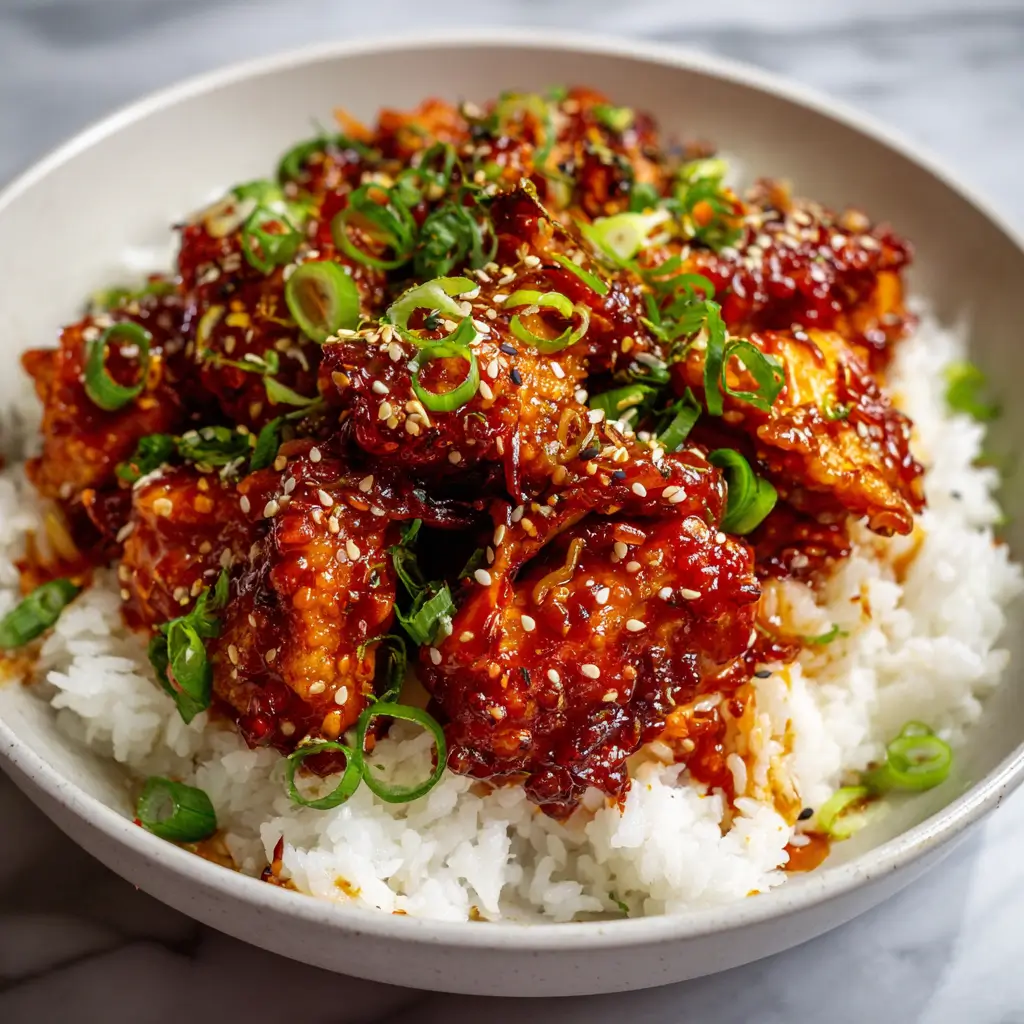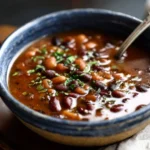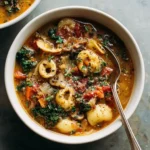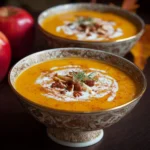Sweet and Spicy Korean Chicken
Introduction
Sweet and Spicy Korean Chicken, also known as Korean Fried Chicken or “Chikin” in South Korea, is a beloved dish that has gained international acclaim for its crispy texture and bold flavors. It’s a staple in Korean street food culture and is often enjoyed with friends over drinks or as a comfort meal at home. The perfect balance of sweetness from gochujang and honey, and heat from gochugaru chili powder and garlic, makes this dish a crowd-pleaser. Whether you’re new to Korean cuisine or a seasoned fan, this recipe will guide you to create a restaurant-quality version in your own kitchen.
The History
Korean fried chicken traces its roots back to the 1970s when fried chicken was introduced in South Korea, inspired by American fast food culture. Over the decades, it evolved into a uniquely Korean style, especially in the 2000s when double-frying techniques and signature sauces became popular. The sweet and spicy variation, or “Yangnyeom Chicken,” emerged as one of the most favored flavors, often served with a side of pickled radish and beer. Today, Korean fried chicken is a global phenomenon, with chains like Kyochon and BHC expanding internationally and showcasing the versatility and deliciousness of this dish.
Ingredients Breakdown
Understanding each ingredient in Sweet and Spicy Korean Chicken is key to mastering the dish. Here’s a breakdown:
- Chicken: Boneless chicken thighs or wings are preferred for their juiciness and crispiness when fried.
- Flour and Cornstarch: A mix creates a light and crispy crust that stays crunchy longer.
- Gochujang (Korean Red Pepper Paste): Adds a deep umami and fermented flavor.
- Gochugaru (Korean Chili Powder): Provides the signature spicy kick.
- Honey or Sugar: Balances the heat with natural sweetness.
- Garlic and Ginger: Adds aromatic depth to the sauce.
- Soy Sauce: Enhances saltiness and richness.
- Sesame Oil and Seeds: For finishing touches of nutty flavor and texture.
Step-by-Step Recipe
- Cut chicken into bite-sized pieces and marinate with salt, pepper, garlic, and ginger for at least 30 minutes.
- Mix flour and cornstarch in a 1:1 ratio for a crispy coating.
- Fry the chicken in batches at 325°F (160°C) until golden. Remove and drain.
- Increase oil temperature to 375°F (190°C) and fry again for 30 seconds to 1 minute for extra crunch.
- While chicken fries, prepare the sauce by simmering gochujang, gochugaru, honey, soy sauce, minced garlic, and a splash of water until thickened.
- Toss the fried chicken in the hot sauce until fully coated.
- Sprinkle with toasted sesame seeds and chopped green onions before serving.
Tips
- Double-frying is essential for the signature Korean chicken crunch.
- If using chicken wings, parboil them first for tender meat.
- Use a wire rack after frying to keep the chicken crispy.
- Add a splash of vinegar or lime juice to brighten the sauce.
- Make extra sauce to serve on the side for dipping.
Variations and Customizations
This recipe is highly customizable to suit different tastes:
- Sweet Garlic: Increase honey and garlic for a sweeter, more aromatic version.
- Cheese Lover’s: Sprinkle mozzarella or cheddar over the chicken before serving.
- Butter Soy Garlic: Add butter and more soy sauce for a savory twist.
- Vegetarian Option: Substitute chicken with cauliflower or tofu.
- Extra Heat: Add Sriracha or finely chopped fresh chilies to the sauce.
Health Considerations and Nutritional Value
While Korean chicken is indulgent, you can make it healthier with a few adjustments:
- Use air-frying instead of deep-frying to reduce oil intake.
- Opt for skinless chicken breasts to lower fat content.
- Use natural sweeteners like maple syrup or coconut sugar instead of refined sugar.
- Limited sodium: Use low-sodium soy sauce to reduce salt intake.
- Average serving (about 300g) contains approximately 400–500 calories, with high protein and moderate fat.
Ingredients
- 1 lb (450g) chicken thighs or wings
- ½ cup all-purpose flour
- ½ cup cornstarch
- 1 egg (optional, for extra crispiness)
- Oil for frying
- 2 tbsp gochujang (Korean chili paste)
- 1 tbsp gochugaru (Korean chili powder)
- 2 tbsp honey or brown sugar
- 1 tbsp soy sauce
- 1 clove garlic, minced
- ½ tsp ginger, grated
- 1 tsp sesame oil
- 1 tbsp water (as needed)
- Toasted sesame seeds and green onions for garnish
Directions
- Marinate Chicken: In a bowl, mix chicken with minced garlic, grated ginger, salt, and pepper. Let sit for 30 minutes.
- Prepare Coating: Combine flour and cornstarch in a bowl. Add egg if using for a more textured crust.
- First Fry: Heat oil in a deep fryer or large pot to 325°F (160°C). Coat chicken pieces and fry until light golden. Drain on a wire rack or paper towels.
- Second Fry: Increase oil temperature to 375°F (190°C). Fry chicken again for 30–60 seconds until extra crispy. Set aside.
- Make Sauce: In a saucepan, combine gochujang, gochugaru, honey, soy sauce, garlic, ginger, and sesame oil. Simmer over medium heat, stirring until thickened. Add water if too thick.
- Toss Chicken: Add fried chicken to the saucepan and toss until evenly coated.
- Serve: Garnish with sesame seeds and green onions. Serve hot with a side of pickled radish or rice.
FAQ
Can I use frozen chicken?
Yes, but make sure to thaw it completely and pat dry before frying to avoid oil splatters and soggy texture.
How long can I store leftovers?
Store in an airtight container in the fridge for up to 2 days. Reheat in an oven or air fryer for best results.
Can I make the sauce ahead of time?
Absolutely! The sauce can be made a day in advance and refrigerated. Reheat before tossing with freshly fried chicken.
Is there a gluten-free version?
Yes, use gluten-free flour or rice flour instead of all-purpose flour.
How spicy is this dish?
It’s moderately spicy. Adjust the amount of gochugaru to suit your taste or add more honey to balance the heat.
Summary
Sweet and Spicy Korean Chicken combines crispy fried chicken with a bold, sticky sauce that balances heat and sweetness perfectly. Easy to customize and perfect for gatherings or solo indulgence, it’s a flavorful gateway into the world of Korean cuisine.










